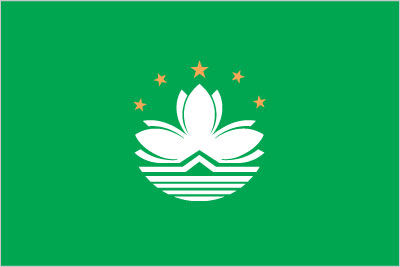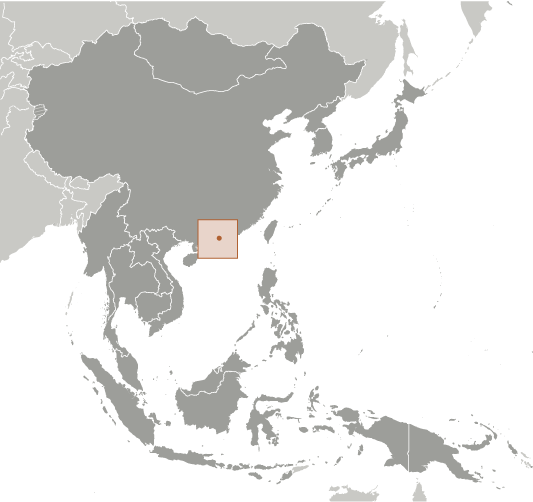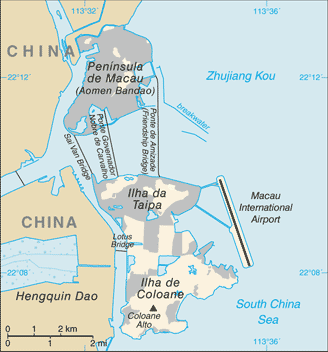|
Economy - overview:
|

|
|
Since opening up its locally-controlled casino industry to foreign competition in 2001, Macau has attracted tens of billions of dollars in foreign investment, transforming the territory into one of the world's largest gaming centers. Macau's gaming and tourism businesses were fueled by China's decision to relax travel restrictions on Chinese citizens wishing to visit Macau. By 2006, Macau's gaming revenue surpassed that of the Las Vegas strip, and gaming-related taxes accounted for more than 70% of total government revenue. Macau's economy slowed dramatically in 2009 as a result of the global economic slowdown, but strong growth resumed in 2010-11, largely on the back of tourism from mainland China and the gaming sectors. In 2012, this city of 582,000 hosted nearly 28 million visitors. Almost 60% came from mainland China. Macau's traditional manufacturing industry has slowed greatly since the termination of the Multi-Fiber Agreement in 2005. China is Macau's second largest goods export market, behind Hong Kong, and followed by the United States. In 2012, exports were less than US$1 billion, while gaming receipts were US$38 billion, a 13.5% increase over 2011. Macau's economy expanded by 10% in 2012; although impressive, it was a slower growth rate than in previous years. Macau continues to face the challenges of managing its growing casino industry, money-laundering, and the need to diversify the economy away from heavy dependence on gaming revenues. Macau's currency, the pataca, is closely tied to the Hong Kong dollar, which is also freely accepted in the territory.
|
|
|
GDP (purchasing power parity):
|

|
|
$47.19 billion (2011 est.)
country comparison to the world: 98
$42.9 billion (2011 est.)
$39 billion (2010 est.)
note:
data are in 2012 US dollars
|
|
|
GDP (official exchange rate):
|

|
|
$44.3 billion (2012 est.)
|
|
|
GDP - real growth rate:
|

|
|
10% (2012 est.)
country comparison to the world: 9
20.7% (2011 est.)
27% (2010 est.)
|
|
|
GDP - per capita (PPP):
|

|
|
$82,400 (2011 est.)
country comparison to the world: 4
$75,500 (2010 est.)
$69,700 (2009 est.)
|
|
|
GDP - composition by sector:
|

|
|
agriculture: 0%
industry:
6.4%
services:
93.6% (2011 est.)
|
|
|
Labor force:
|

|
|
356,700 (2012 est.)
country comparison to the world: 160
|
|
|
Labor force - by occupation:
|

|
|
manufacturing: 3%
construction:
6.6%
transport and communications:
4.3%
wholesale and retail trade:
12.7%
restaurants and hotels:
15.5%
gambling:
15.1%
public sector:
7.1%
financial services:
2.2%
other services:
33.5% (2012 est.)
|
|
|
Unemployment rate:
|

|
|
1.9% (2012 est.)
country comparison to the world: 10
2.6% (2011 est.)
|
|
|
Population below poverty line:
|

|
|
NA%
|
|
|
Household income or consumption by percentage share:
|

|
|
lowest 10%: NA%
highest 10%:
NA%
|
|
|
Budget:
|

|
|
revenues: $16.95 billion
expenditures:
$6.934 billion (2012 est.)
|
|
|
Taxes and other revenues:
|

|
|
76.7% of GDP (2012 est.)
country comparison to the world: 4
|
|
|
Budget surplus (+) or deficit (-):
|

|
|
45.3% of GDP (2012 est.)
country comparison to the world: 1
|
|
|
Inflation rate (consumer prices):
|

|
|
6.1% (2012 est.)
country comparison to the world: 160
5.8% (2011 est.)
|
|
|
Commercial bank prime lending rate:
|

|
|
5.25% (31 December 2012 est.)
country comparison to the world: 155
5.25% (31 December 2011 est.)
|
|
|
Stock of narrow money:
|

|
|
$5.94 billion (31 December 2012 est.)
country comparison to the world: 93
$5.41 billion (31 December 2011 est.)
|
|
|
Stock of broad money:
|

|
|
$46.8 billion (31 December 2012 est.)
country comparison to the world: 68
$46.29 billion (31 December 2011 est.)
|
|
|
Stock of domestic credit:
|

|
|
$5.723 billion (31 December 2012 est.)
country comparison to the world: 114
$8.612 billion (31 December 2011 est.)
|
|
|
Market value of publicly traded shares:
|

|
|
$85.5 billion (2 March 2012 est.)
country comparison to the world: 52
$46.1 billion (31 February 2011)
$2.3 billion (31 December 2008 est.)
|
|
|
Agriculture - products:
|

|
|
only 2% of land area is cultivated, mainly by vegetable growers; fishing, mostly for crustaceans, is important; some of the catch is exported to Hong Kong
|
|
|
Industries:
|

|
|
tourism, gambling, clothing, textiles, electronics, footwear, toys
|
|
|
Industrial production growth rate:
|

|
|
-7.8% (2012)
country comparison to the world: 166
|
|
|
Current account balance:
|

|
|
$17.01 billion (2011 est.)
country comparison to the world: 22
$12.06 billion (2010 est.)
|
|
|
Exports:
|

|
|
$1.02 billion (2012 est.)
country comparison to the world: 156
$871 million (2011 est.)
note:
includes reexports
|
|
|
Exports - commodities:
|

|
|
clothing, textiles, footwear, toys, electronics, machinery and parts
|
|
|
Exports - partners:
|

|
|
Hong Kong 50.2%, China 16.8%, US 6.2% (2012 est.)
|
|
|
Imports:
|

|
|
$8.866 billion (2012 est.)
country comparison to the world: 104
$7.786 billion (2011 est.)
|
|
|
Imports - commodities:
|

|
|
raw materials and semi-manufactured goods, consumer goods (foodstuffs, beverages, tobacco), capital goods, mineral fuels and oils
|
|
|
Imports - partners:
|

|
|
China 32.7%, Hong Kong 11.6%, France 8.7%, Japan 6%, US 5.2% (2012 est.)
|
|
|
Reserves of foreign exchange and gold:
|

|
|
$16.6 billion (31 December 2012 est.)
country comparison to the world: 62
$34.03 billion (2011 est.)
note:
the Fiscal Reserves Act that came into force on January 1, 2012 requires the fiscal reserve to be separated from the foreign exchange reserves and to be managed separately; the transfer of assets took place in February 2012
|
|
|
Debt - external:
|

|
|
$0 (2012)
country comparison to the world: 203
|
|
|
Stock of direct foreign investment - at home:
|

|
|
$14.9 billion (2011 est.)
country comparison to the world: 78
$13.6 billion (2010 est.)
|
|
|
Stock of direct foreign investment - abroad:
|

|
|
$672.1 million (2011 est.)
country comparison to the world: 78
$550.6 million (2010)
|
|
|
Exchange rates:
|

|
|
patacas (MOP) per US dollar -
7.99 (2012 est.)
8.0182 (2011 est.)
8.0022 (2010 est.)
7.983 (2008)
8.011 (2007)
|
|
|
Fiscal year:
|

|
|
calendar year
|
|
|
|





 )
)



